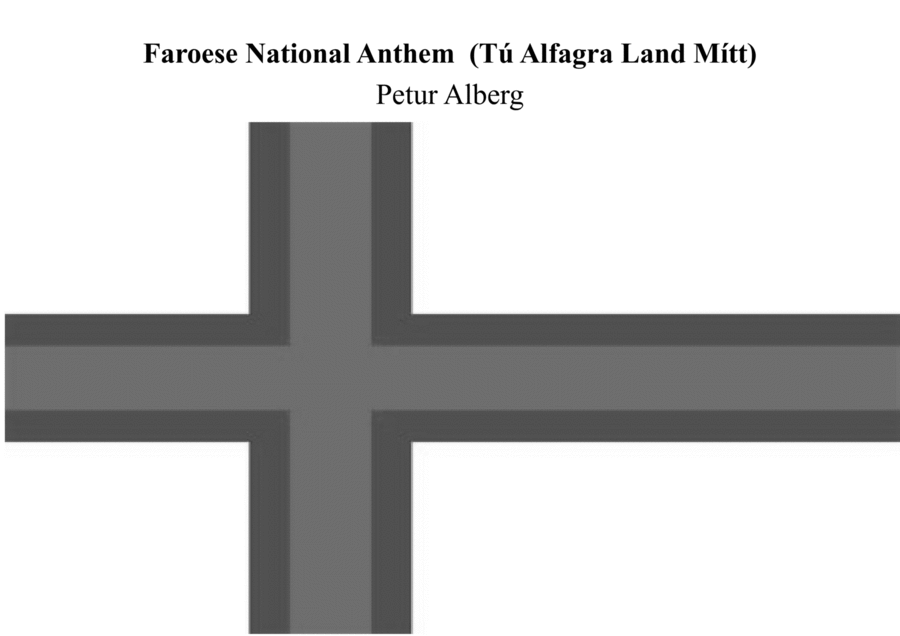Piano Solo - Level 3 - Digital Download SKU: A0.1431316 By Keith Terrett. By Petur Alberg. Arranged by Keith Terrett. 20th Century,Classical,Contest,Festival,Instructional,Traditional. Score. 3 pages. Keith Terrett #1011784. Published by Keith Terrett (A0.1431316). An arrangement of the Faroese National Anthem for Piano.Tú alfagra land mítt (Thou fairest land of mine), officially Mítt alfagra land (My fairest land), is the national anthem of the Faroe Islands. It was written in 1906 by headteacher Símun av Skarði, and the melody was composed in 1907 by violinist Petur Alberg.The song was written in a work dated 1 February 1906 by Símun av Skarði, the headmaster of a high school in Føgrulið, southwest of Klaksvík. It was written during a time of strong division in the Faroe Islands between conservatives who wanted to preserve Danish rule and autonomists who wanted more self-government, of which Símun was the latter.Violinist Petur Alberg wrote the first notes of the music of the anthem on 4 September 1907, after the melody came to him that evening. He later sang the melody down the phone in the Løgting to Símun av Skarði, who liked it. Petur then sent it to a music teacher he knew in Akureyri, Iceland, and to asked him to harmonise it for a male quartet. In October 1907, the male quartet arrangement arrived, and singers began to practice it for a Boxing Day concert in Sloan's Hall in Tórshavn. Petur, not daring to reveal the song's author, told the singers the song was Icelandic, by a certain Jón Sveinsson. However, the singers liked the song. The song was performed at the concert on 26 December 1907, which was the first time any song by Petur had been performed publicly and the first time Tú alfagra land mítt was performed publicly.On 8 January 1908, Tú alfagra land mítt was published in the Faroese newspaper Tingakrossur. It was then published in the Lesibók, a literary history in chronological order, in 1911. It was later published in many editions of the Songbók Føroya fólks (Faroese People's Songbook), generally in the number one position, from 1913 through 1959.In 1925, a Nynorsk translation of the song by Rolf Hjort Schøgen was published in the Tingakrossur. In 1928, a Danish translation by university student Tormod Jørgensen was published in Højskolebladet No. 7928.[1][2] An Icelandic translation by Jochum M. Eggertsson appeared in the magazine Dvöl in 1935. The same year, a German translation by Ernst Krenn was published in the Føroyaheftið (Faroese Instalment), a Faroese booklet at the Nordic Society in Vienna, Austria. In 1943, an English translation by Padre G. C. C. Knowleson was featured in the notes of the magazine The Pioneer by some British soldiers in the Faroe Islands during World War II. As the national anthem Tú alfagra land mítt won out in a rivalry with Eg oyggjar veit (I know some islands), from 1877, on which song should become the national anthem of the Faroe Islands. Tú alfagra land mítt has been sung at all festivals in the Faroe Islands, and it has been in the psalm book of the Faroese Church since 1990. The national radio station Útvarp Føroya, established in 1957, played it every night before ending its broadcast for the evening.
